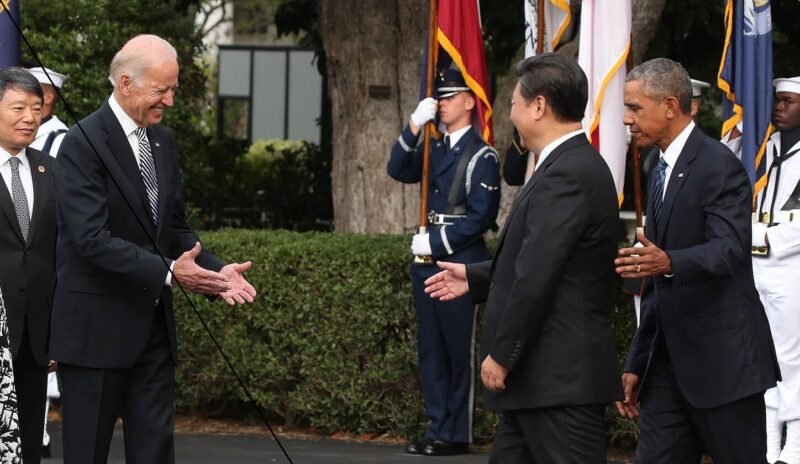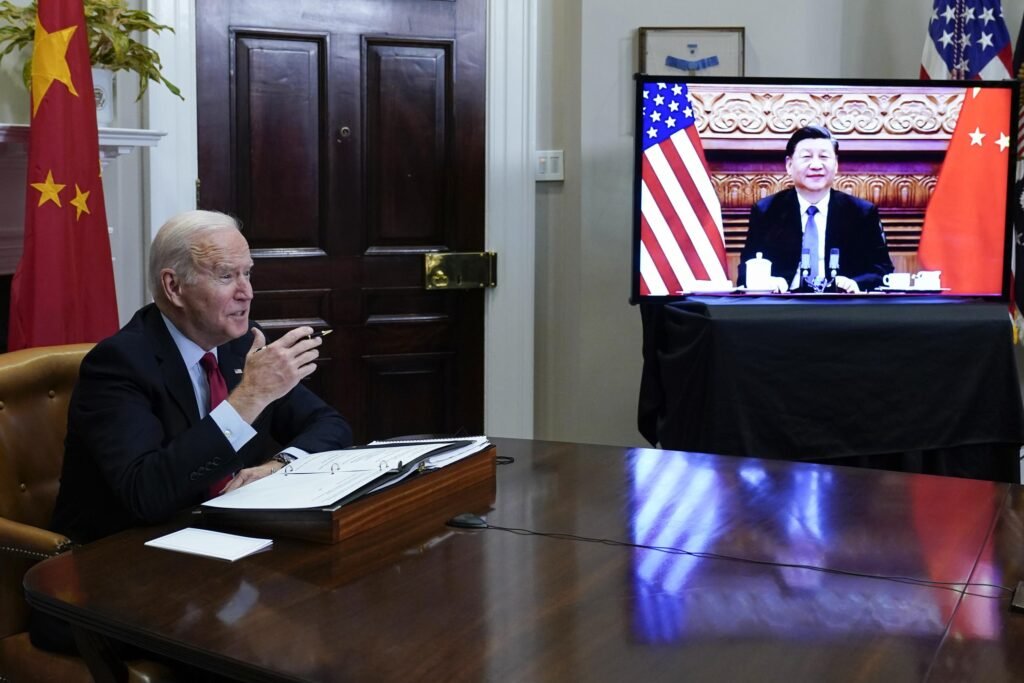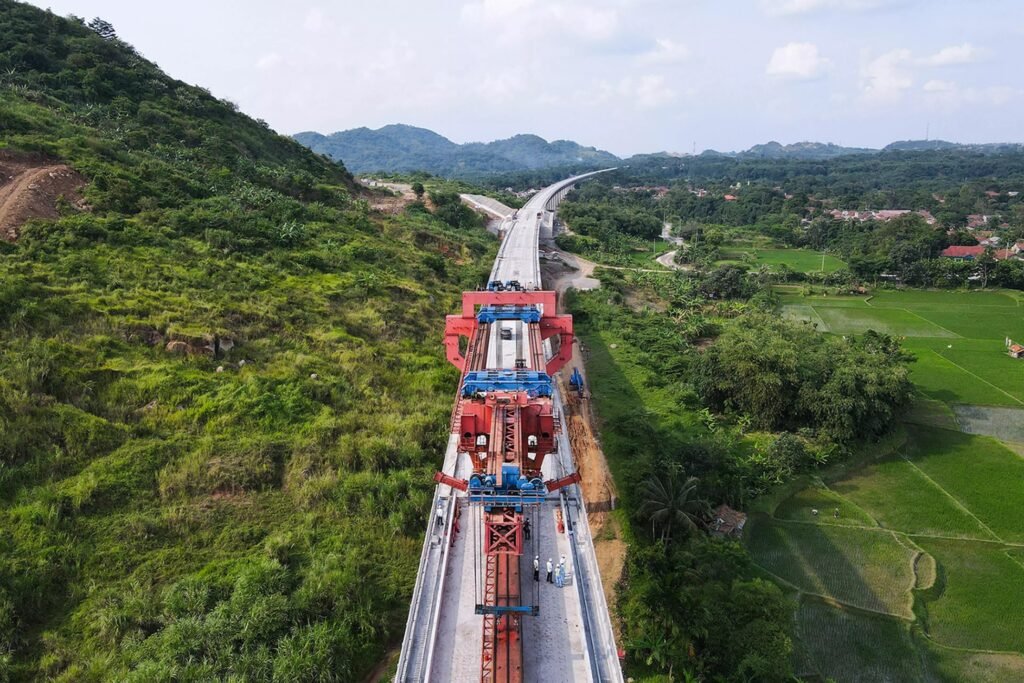‘Pivot to Asia’ and its strengths and shortcomings

Pivot to Asia was the brainchild of the Obama administration, finding its inception in Obama’s address to the Australian parliament. Pivot to Asia is essentially the U.S. acknowledging China’s rise globally. Being one of the key foreign policy goals of the Obama Administration, the pivot aims to “re-balance” U.S. interests strategically away from Europe and the Middle East and toward East Asia. The East Asia Strategy (2009–2017) of President Barack Obama marked a dramatic change in American foreign policy. It shifted the country’s attention away from the Middle East and Europe and started making significant investments in Asian nations. It saw the U.S. investing more in East Asian nations especially countries with close proximity to China. Obama had recognised the weak flailing Russia had ceased to be as big a threat as China would be, “I’ve been very explicit in saying that we have more to fear from a weakened, threatened China than a successful, rising China,” Obama had said while citing his concerns about China if China were to not ‘cooperate’ with the U.S. in maintaining the ‘international order’.[1]
The ‘pivot’ aimed to put in more concentrated diplomatic and trade in Asia under the Obama administration. Although before Obama, under Bush, efforts were made to reinforce and strengthen U.S. ties with the First Island Chain, case in point, the construction of the Changi Naval Base (CNB) in Singapore which to this day is used by the US Navy for logistics and re-supply.[2] The CNB also entered into a bilateral agreement with U.S. QUAD partner, India, in 2018 allowing India’s operational reach to increase and open up another front to keep a check on China.[3](soon after QUAD was re-established towards the end of 2017). A few of the major highlights of the pivot are to keep a check on Chinese influence as was just illustrated while defensively, it puts a mark on Chinese mobilization and power projection in the Indian Ocean, it offensively also counters Chinese aggressions in the South China Sea. (Gurung 2018) The Obama administration helped the Republic of Korea (ROK) to warm up to Japan and garner support at large, for the U.S. in Asia, Obama visited East Asia (each time visiting for multilateral or multiple bilateral meets a total of 10 times during his tenure.[4]
The pivot signals the USA shifting gradually towards East Asia from their traditional points of interest, the middle east and Europe, it is a gradual shift not indicating preference in policy formation but the USA being cognizant of the Chinese threat/rise. The shift has had different approaches under the Trump and now the Biden administration. A few factors are key to each administration and by extension the pivot itself. The first one being diplomatic relations, one of the key aspects of the pivot to Asia is establishing a U.S. presence in East Asia, which the Obama administration was successful in. Additionally, the U.S. has also been a facilitator of better cooperation in-between nation-states through multi-lateral dialogues and conferences. The U.S., therefore, has been able to rally a great amount of soft power in the region owing to various nations such as Laos and Cambodia becoming more deeply entrenched in the anti-China narrative because of them having great relations with good allies of the U.S. and U.S. itself.[5][6]

The second is economic, U.S. has increased its investments in the region, and despite it not being able to match up to Chinese investments, USA has started building an economic presence in the region as U.S. also comes hand in hand with other Western allies which also invest.[7][8] U.S., however, depending on the incumbent President has come with investments and sanctions both, contingent on the nation, Obama had sanctioned Myanmar and only dropped them once democratic elections took place but, Trump completely ignored the coup of Myanmar.[9] However, Biden has denounced the coup and hopes that the people of Myanmar can get a democratically elected leader again. Barring this he hasn’t taken any concrete steps as they might jeopardize US ambitions and have a negative impact on the ASEAN countries and their outlook on U.S.[10] The third aspect is the strategic aspect which focuses primarily on capacity building, opening multiple fronts for China to counter, the geo-economic and geo-political superiority of U.S. and its allies against China. It also consists of U.S. gaining a high ground on both Soft and Hard power, therefore trade agreements, Trilateral treaties, and QUAD all fall under this category. The strategic(geo-economic and geo-political) aspect is probably the most important.
Is this, however, best expressed as a “pivot”? First of all, both adversaries and friends will swiftly recognize the great rhetoric as hollow in the lack of resources. Over the next decade, the US might see defence spending reduced by up to a trillion dollars. Defence budget cutbacks of this kind are inexorably detrimental to American capabilities and, thus, to the capacity to reassure and deter in Asia. There may be reductions in defence budget coming from Europe and Southwest Asia, but where will the forces come from when Iran, Afghanistan, Iraq, or Pakistan heats up in the coming decade? This pivot creates a scenario where East Asian troops will eventually be drained if US troops are hollowed of the prevalent force structure created in Europe and Southwest Asia. Furthermore, the “pivot” narrative creates the impression that America is a hyperactive powerhouse which moves from one area to the other — pointing towards the basic incapability of managing a grand strategy with a global scope. However, can anyone argue that the U.S. freedom of action and relative might are, in reality, larger than they were during the Cold War? I do not believe so owing to the multi-lateral setup of the international system. U.S. is no longer of a world power, which might be alarming to their European allies (whose backing is required to contain China’s rise) and bears the unpleasant implication that U.S. may “pivot” once more based on a new, reductionist, one-region-at-a-time idea of grand strategy.[11]
The Pivot may be a reassuring signal to all the worried allies U.S. has saved face by indicating high-level American interest in the region which ought to be reassuring and a deterrent enough. President Bush’s proposal for a Free Trade Area in the Asia-Pacific gained momentum with the adoption of the Korea-U.S. Free Trade Agreement and the advancement of the Trans-Pacific Partnership discussions (now CPTPP). Additionally, U.S. focusing on capacity building allows the U.S. to make budget cuts which have been happening mostly in Europe and not Asia itself. Capacity building and brokering bilateral meetings and talks in the region allow regional economic cooperation and a staunch front against China which must calculate its moves carefully and not make any rash decisions. However, Washington has its biggest obstacle on the economic front, where it is regarded as sorely missing a comprehensive Asia economic policy. In contrast, China’s commerce with every nation in the Indo-Pacific area nearly always exceeds that of the United States. According to reports, two-way commerce between Southeast Asia and China reached $685 billion in 2020, which is “more than double that of the region’s trade with the United States.” As the United States is not a party to the two mega-trade pacts in Asia, the Regional Comprehensive Economic Partnership (RCEP) and the Comprehensive and Progressive Agreement for Trans-Pacific Partnership (CPTPP), ASEAN nations hoping for greater economic cooperation from the Biden administration may be disappointed when compared to Xi’s Belt and Road Initiative.[12]

One other benefit of this pivot is that it helps other regional powers grow on account of the growing hegemony of China as a regional hegemon, case in point India and Japan which now have the direct support of a global hegemon. The US’s influence in multilateral organisations, such as international financial institutions, would also need to be reaffirmed in order for the Asia Pivot to advance its agenda in the area (IFIs). IFIs including the World Bank Group (WBG), International Monetary Fund (IMF), and Asian Development Bank all have significant US ownership (ADB). Multilateral development banks impose conditions on developing nations in the form of expanding the role of the private sector, liberalising certain sectors, and defragmenting essential services. The US government can advance its neoliberal agenda and thwart China’s efforts to support and develop the area through the Belt and Road Initiative by fortifying its influence in these IFIs. At the price of human security, the Pivot to Asia plan seeks to restrict China’s expanding influence by increasing military strength and aid in the region. Additionally, the aim to give IFIs more control over development and to fortify US allies that would back their neoliberal ambitions will certainly lead to more resource extraction in the region.[13] This might not necessarily be a good thing for the region but is definitely for the U.S. and the West and it helps the U.S. in its attempt to solve the Chinese threat in the most efficient manner they can without any major military showcases.
US’s response to a potential threat to Taiwan when compared to its response to the Ukrainian invasion is indicative of how much the U.S. is invested in countering the Chinese threat. House Speaker Nancy Pelosi spending a night in Taiwan essentially destabilized the region but was an indication or a warning to China indicating the de facto support of U.S. Japan and ROK becoming such great partners along with Australia becoming more aggressively anti-China has only aided the U.S. as it has to invest lesser owing to the various countries who have vested interests in the region and with China not becoming the world hegemon. Additionally, around 95% of the world’s chip supply comes from Taiwan, making it another extremely important region for the USA to control as it is literally the future of all trade. Therefore, Pivot to Asia has helped the U.S. in achieving its dreams as we see AUKUS, trilateral treaties, CPTPP, Quad and so on coming up now to counter China.
[1] Goldberg, Jeffrey. “The Obama Doctrine.” The Atlantic. Atlantic Media Company, August 18, 2021. https://www.theatlantic.com/magazine/archive/2016/04/the-obama-doctrine/471525/.
[2] The Straits Times (in print) editorial on November 23, 2009
[3] “Navy Gets Access to Singapore’s Changi Naval Base.” The Economic Times. Accessed September 27, 2022. https://economictimes.indiatimes.com/news/defence/navy-gets-access-to-singapores-changi-naval-base/articleshow/61855776.cms.
[4] Nakamura, David. “An Incomplete Victory Lap for Obama on His Final Presidential Trip to Asia.” The Washington Post. WP Company, September 8, 2016. https://www.washingtonpost.com/politics/no-victory-lap-for-obama-on-his-final-presidential-trip-to-asia/2016/09/08/fb9a56ce-75d2-11e6-b786-19d0cb1ed06c_story.html.
[5] Liu, W., Wang, B. The Roles of the United States in the China–US–Japan Trilateral Relations. J Glob Policy Gov 2, 167–180 (2013). https://doi.org/10.1007/s40320-013-0041-4
[6] Ching, Nike. “US Boosts Asia Diplomacy to Address Growing Competition with China.” VOA. Voice of America (VOA News), June 9, 2022. https://www.voanews.com/a/us-boosts-asia-diplomacy-to-address-growing-competition-with-china-/6610359.html.
[7] Published by Statista Research Department, and Aug 2. “U.S. Direct Investments in Asia Pacific 2000-2021.” Statista, August 2, 2022. https://www.statista.com/statistics/188604/united-states-direct-investments-in-the-asia-pacific-region-since-2000/.
[8] “America Set to Invest $150 Million in Southeast Asia.” The Economic Times. Accessed September 27, 2022. https://economictimes.indiatimes.com/news/international/world-news/america-set-to-invest-150-million-in-southeast-asia/articleshow/91570820.cms?from=mdr.
[9] Brunnstrom, David. “Obama Announces Lifting of U.S. Sanctions on Myanmar.” Reuters. Thomson Reuters, October 7, 2016. https://www.reuters.com/article/us-usa-myanmar-sanctions-idUSKCN127262.
[10] Sink, Justin. “Biden Team Weighs Myanmar Protest at Asean Summit with Empty Chair.” Bloomberg.com. Bloomberg, May 11, 2022. https://www.bloomberg.com/news/articles/2022-05-11/biden-team-weighs-empty-chair-myanmar-protest-for-asean-summit.
[11] Lakshman, Narayan. “Explained: Understanding the U.S. Strategy of ‘Asia Pivot’.” Return to frontpage. The Hindu, December 20, 2021. https://www.thehindu.com/news/international/explained-understanding-the-us-strategy-of-asia-pivot/article37995079.ece.
[12] ibid
[13] Reality of Aid. “Biden’s Pivot to Asia amid China’s Expanding Influence.” Reality of Aid, May 26, 2021. https://realityofaid.org/bidens-pivot-to-asia/.


















